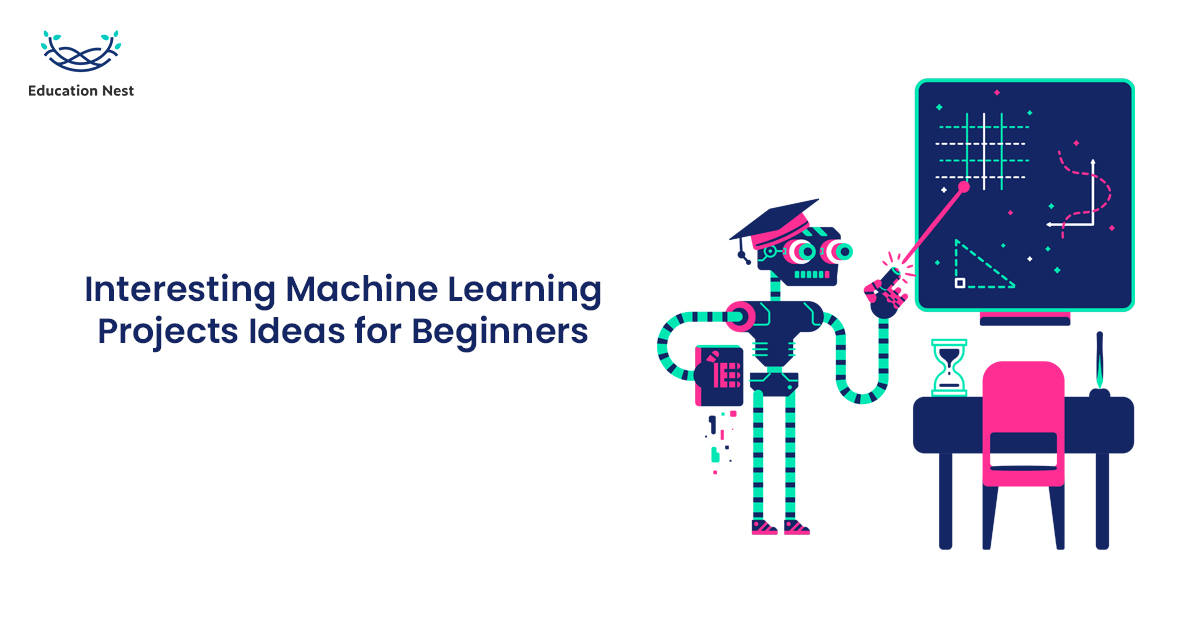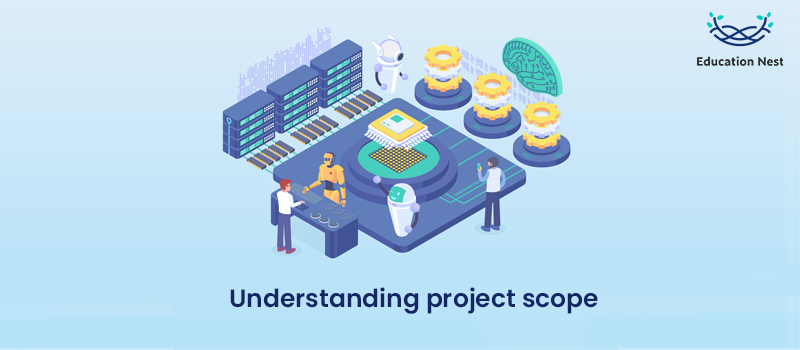
In this article, we will talk about machine learning projects for beginners. In order to start making our models and test their efficiency with real-life situations, we need to first learn about the basics of Machine Learning.
Machine Learning has helped radically change the way Data Scientists create systems to tackle everyday and niche problems. In Machine Learning, we input large data, label the output we want from the application, and then continuously feed it more information.
Additionally, we apply mathematical and statistical tools to let computers create the rules and procedures needed to reach the anticipated outcome. Once that is accomplished, data scientists verify the model’s accuracy, and if the results are satisfactory, they continue with the model.
Before starting a machine learning project, solid planning to carry out the project is required. Any ML project must begin with a thorough end-to-end approach, starting with project scoping and ending with model deployment and management in production.
To help you make the most of each unique project, we must understand the basic steps of a Machine Learning project plan:
- Understanding project scope

The first step is comprehending the ML project’s requirements, and scoping is the first step in machine learning.
- Data collection
Any machine learning model depends on data to function. It’s essential to understand the types of data required, their formats, sources, and compliance specifications.
You must build up the data collection strategy to extract data from locations where it resides within the organisation or from external third-party providers. In this step, the programmer validates the data requirements to ensure the data they have is accurate and error-free.
You Must Like: Boost your Sales with Salesforce
- Building a Machine learning model
Model selection requires an understanding of the standards for accuracy, error, and correctness that a model should follow. After the model has been trained, you test it using validation data to assess its performance and avoid overfitting. Model evaluation is a crucial stage. A model is useless if it performs flawlessly with previous data but poorly with future data.
- Model Deployment
It isn’t enough to just deploy the machine learning mode. The programmer also needs to make sure it is functioning as planned. To ensure accuracy or performance, programmers must retrain your model using new live production data. This is known as model tweaking. Validating the model is also necessary for model tweaking to ensure that the model is not drifting or biassed.
Here are some cool and simple Machine Learning project ideas to test:
- Stock Prices Predictor
A system that forecasts future stock prices by learning about a company’s performance is known as a stock price predictor. There are numerous types of data, including volatility indices, prices, international macroeconomic indicators, fundamental indicators, and more, that are taken into consideration while predicting stocks.
The financial markets’ shorter feedback cycles make it easier for data professionals to test their predictions on new data, which is one benefit of working with stock market data. One can use machine learning for tasks such as forecasting 6-month price movements based on fundamental indicators from an organisation’s quarterly report to get started working with stock market data.
Methods such as A time series can help you comprehend seasonal variation, recurring trends, and even unexpected events so you can figure out what might have caused them. There are many models that can be utilised to perform time-series forecasts.
- Music Genre Classification
This project can be described as being provided with several audio files, with the aim to classify each audio file into a specific genre, such as disco, hip-hop, etc. Machine learning algorithms have found it particularly difficult to learn from audio.
We can create a music genre categorisation model to help with categorising music based on how it sounds. This model’s task is to take audio files as input and classify or categorise those according to the various music genres, such as jazz, pop, rock, etc. however, these genres are constrained by the data that our machine has been trained on, though.
- E-Commerce Recommendation System
One of the most commonly employed uses of data science in businesses that rely on goods and online services is recommendation systems. To improve the user experience, internet retailers create customised recommendations. The E-Commerce Recommendation System operates under the principle of making product-based recommendations, allowing programmers to compare similarities between two items and suggest related products to the user.
A recommendation system only needs the machine learning model to understand the item the user is now viewing. This approach only uses the consumer’s history of purchases.
In order to create associations, the store needs to have a long enough history of transactions. The model can then provide the website visitor with recommendations by displaying the goods they are looking at.
- Fake News Detection
News now spreads at lightning speed thanks to the internet. This has caused unwanted misinformation to spread across the media. People nowadays rely on social media platforms for news, compared to publications where information is fact-checked, and the source of news can be traced. As a result, false news has spread widely.
Machine learning aids in the investigation of various news identification strategies for different datasets. In order to extract helpful post features on various social media platforms, relevant data is used to analyse multiple viewpoints, world events, and many other things.
It is not feasible to take every piece of news and have it examined by a professional due to the enormous volume and pace of data throughout the internet. Hence, a system to identify fake news in real-time and stop the spread of fake information can therefore be developed using machine learning techniques.
- Autocorrect Keyboard & spell check Machine Learning

Autocorrect Keyboard & spell check are features used in real-time. The keyboards on mobile phones include auto-correct functionality. Autocorrect uses natural language processing as its foundation in the scope of machine learning. While typing, it is designed to correct spelling errors and other mistakes.
While the text is being entered, the Autocorrect model corrects spelling mistakes and finds the most similar and relevant words. It compares the keyboarded words with the words found in the dictionary. If the word you wrote is not in the dictionary, the autocorrect function finds the words from your smartphone’s past that are most similar.
- Census Income Dataset Project
A census is the process of gathering, compiling, and publishing demographic, economic, and social statistics about all people in a country for a certain period of time. Government agencies also gather and compile data so that they can make decisions based on evidence with the use of a census.
The Census data is utilised for management, governance, planning, policy-making, and assessment of many government programmes currently being conducted or that are planned to be launched.
Programmers employ a typical imbalanced machine learning dataset for this project. We categorise wages that fall within a given range for census purposes. This primarily aids in understanding the demands for necessities as per their economic standards.
As one can see, Machine Learning Projects can be developed for thousands of basic as well as complicated problems that humans face daily. These projects help not only in reducing human effort but also help to better the quality of data, understand patterns and benefit businesses in achieving their goals smoothly.

